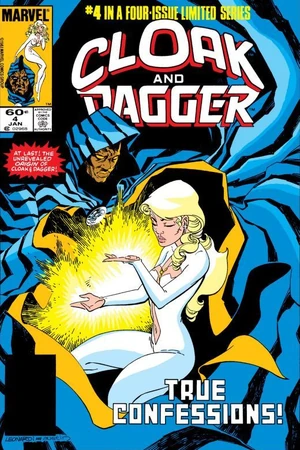
Marvel doubles down on Bill Mantlo’s hit creation by giving them a full miniseries. A comic about a black man and a white woman was controversial not because the duo appeared to be a mixed race couple but because a female-fronted book was rare–especially one who was brand new and wasn’t a spin off of a major male character (like Spider-Woman and She-Hulk), and comics about black men were basically unheard of. Marvel even gave the team hype on the front cover of Marvel Age, its new 25 cent promotional comic.

The mini-series was still a relatively new thing. DC had been doing them since 1979’s “World of Krypton,” which was probably the first, and Marvel had already pushed out Wolverine as its first try of the format–to great success.
The book was illustrated by a relative newcomer, Rick Leonardi, who had a unique style.

It was less focused on “realism” than most Marvel artists, and it had a gritty feel that leant to the mood of the story.

It was a “street level” tale. The two kids are portrayed as confused, spiritually adrift beings who are unsure what to do with their power but at the same time the seedy, terrible life of a runaway haunts them–and they want to destroy all of the parasites and vultures who prey on lost children. They are taken in by a priest, who tries to counsel them away from their violent lives, and are pursued by the police. We also learn that Cloak is a lot like a vampire–he does not eat food, he instead “eats” light from the souls of the people he envelops in darkness. Only Dagger’s light can make him full fully satisfied. They don’t appear to be a romantic couple, but they are clearly symbiotic.
The best part about this series is that it never strays from what it’s about–which is developing these two characters–and eschews mainstream guest stars, even when a Spider-Man cameo would have been fully expected and reasonable.
Far and away, this is one of Mantlo’s best works.
Also, Marvel let Leonardi do every cover so the mood of the book was never compromised.
